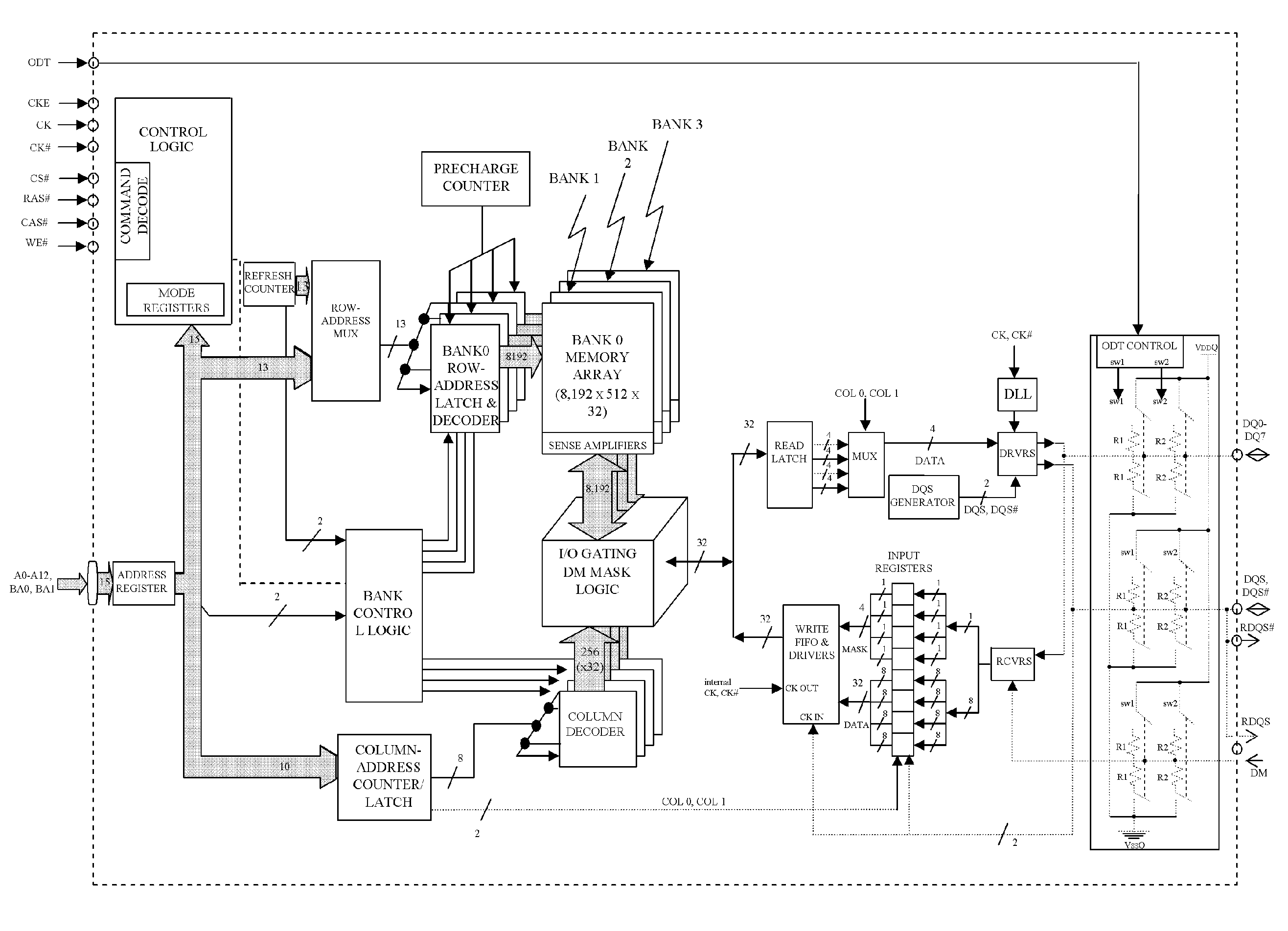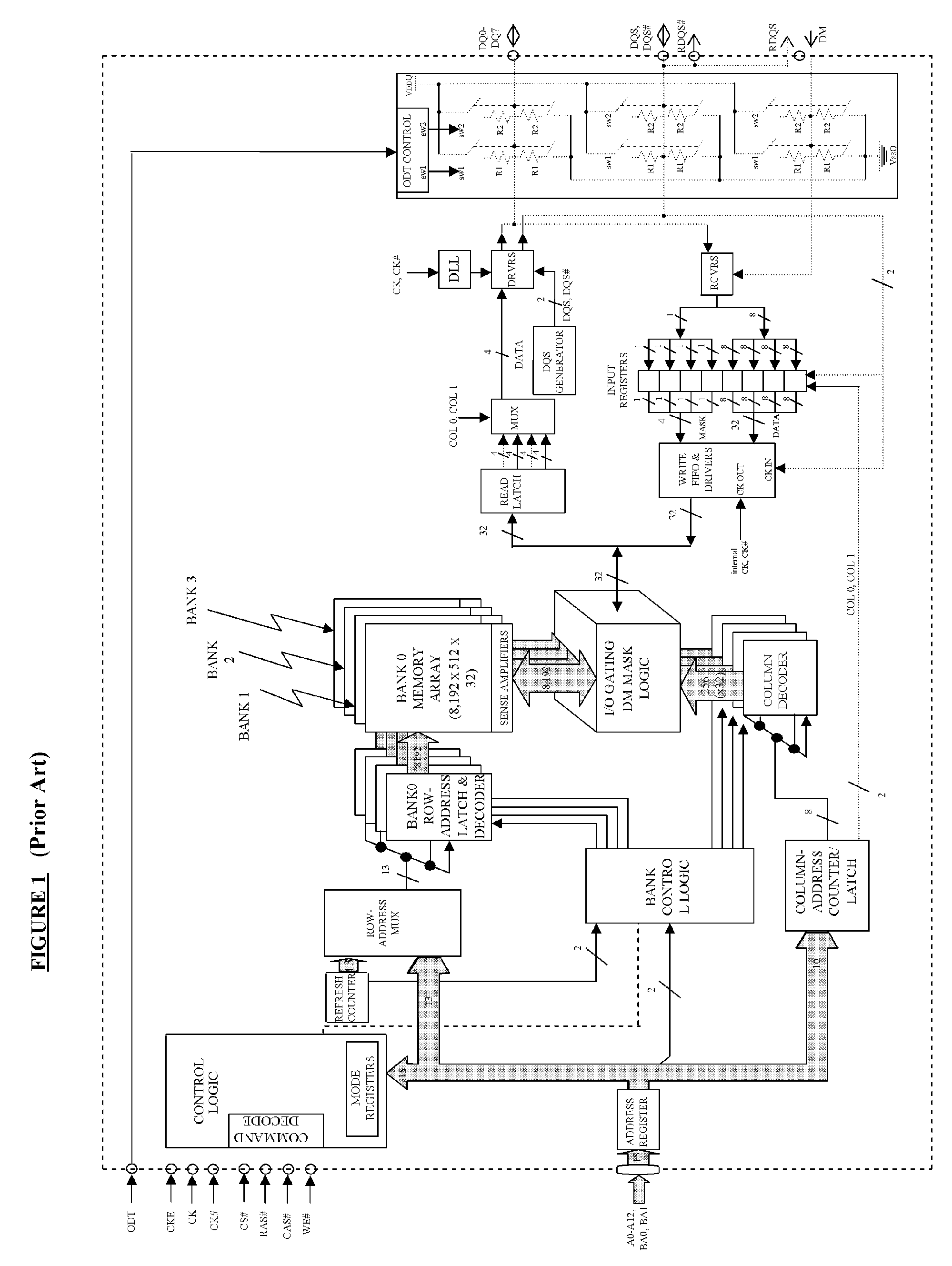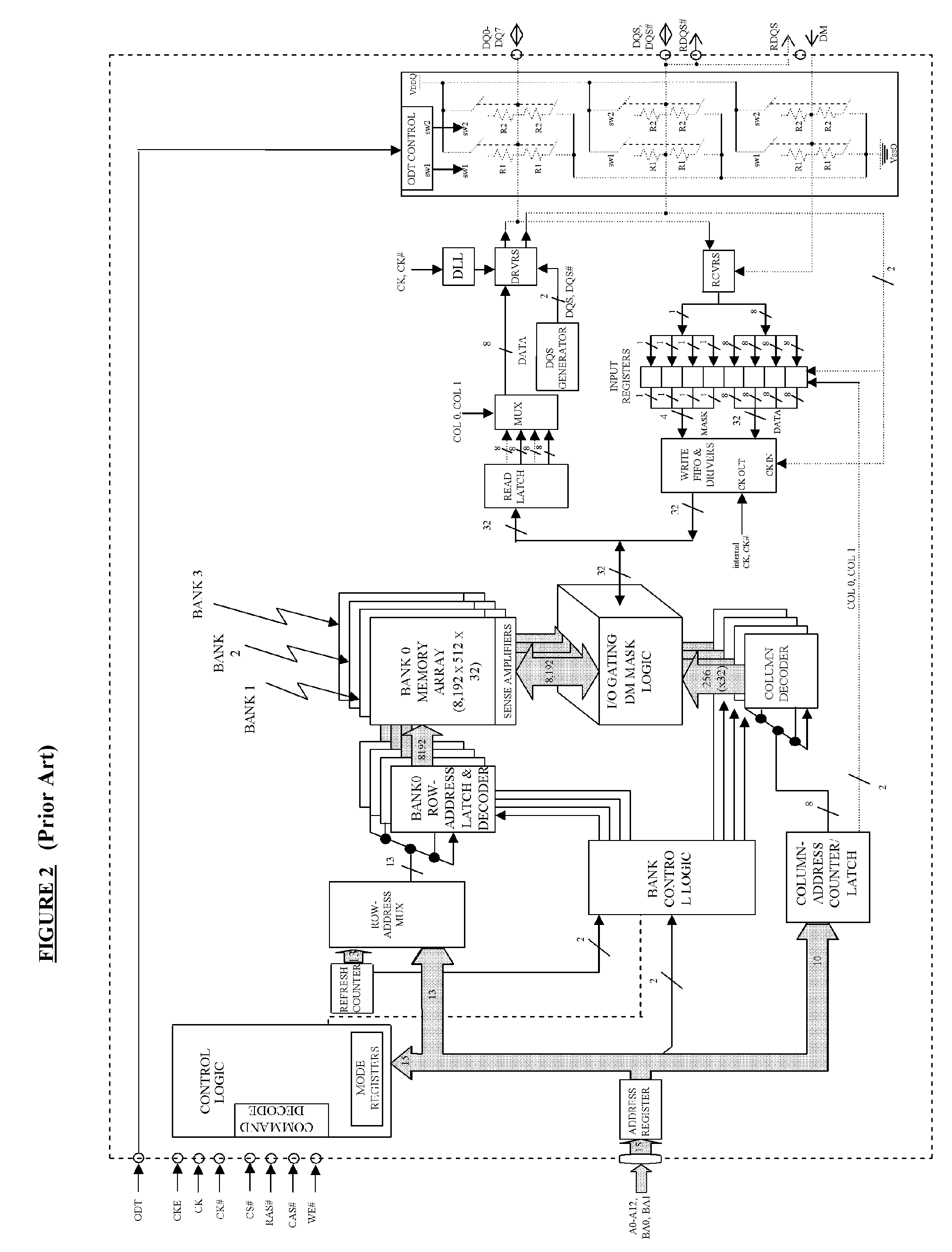Posted precharge and multiple open-page RAM architecture
a pre-charge operation and open-page technology, applied in the field of electronic systems, can solve the problems of unproductive latencies, waste of clock cycles, and inability to allow row accesses of less than a burst length of 4, and achieve the effect of reducing the execution time of the pre-charge operation
- Summary
- Abstract
- Description
- Claims
- Application Information
AI Technical Summary
Benefits of technology
Problems solved by technology
Method used
Image
Examples
Embodiment Construction
[0035]The utilization of the present invention applies to volatile as well as nonvolatile memories. Implementation in stand alone memory devices, SOC (System On Chip), SIP (System In Package), SIC (System In Chip), DIMM's (Dual In Line Memory Modules), SIMM's (Single In Line Memory Modules) and other combinations are possible. Furthermore, “page” architecture is widely used in DRAM's and flash memories, the operations of the latter being described in detail in the available literature and therefore will not be discussed in any detail here. “Precharge” is widely used for dynamic devices like DRAM's, FeRAM's (ferroelectric RAM's), etc. “Page” architecture is also expected to influence future memory products like MAG RAM's, plastic RAM's, CNT RAM's (carbon nano tube), organic memories, phase-change memories, molecular memories and similar products. As such, the implementation of the present invention encompasses all such devices, as well as other memory devices that employ a page archi...
PUM
 Login to View More
Login to View More Abstract
Description
Claims
Application Information
 Login to View More
Login to View More - R&D
- Intellectual Property
- Life Sciences
- Materials
- Tech Scout
- Unparalleled Data Quality
- Higher Quality Content
- 60% Fewer Hallucinations
Browse by: Latest US Patents, China's latest patents, Technical Efficacy Thesaurus, Application Domain, Technology Topic, Popular Technical Reports.
© 2025 PatSnap. All rights reserved.Legal|Privacy policy|Modern Slavery Act Transparency Statement|Sitemap|About US| Contact US: help@patsnap.com



